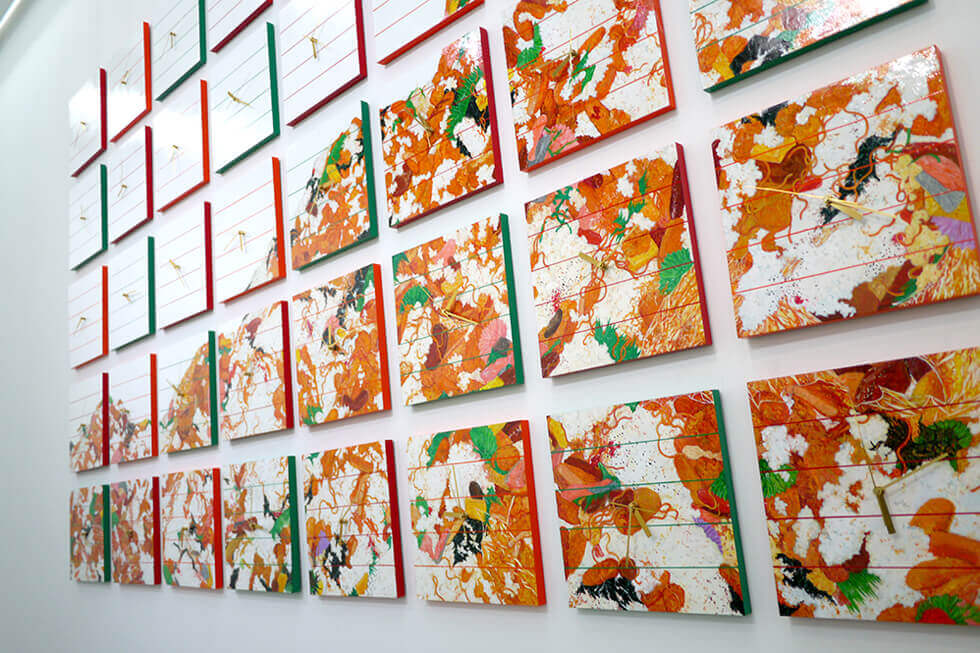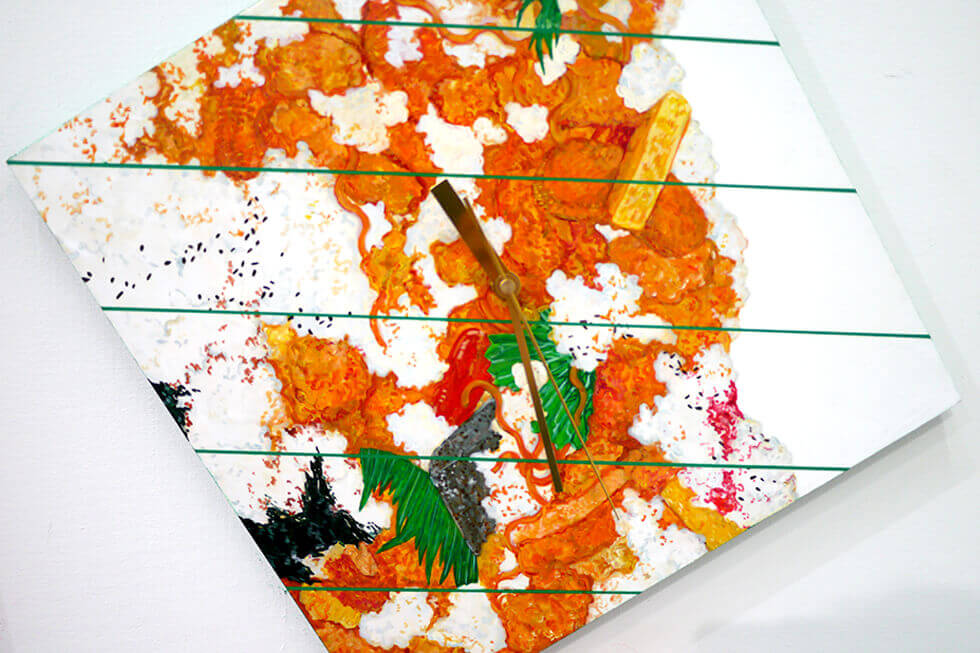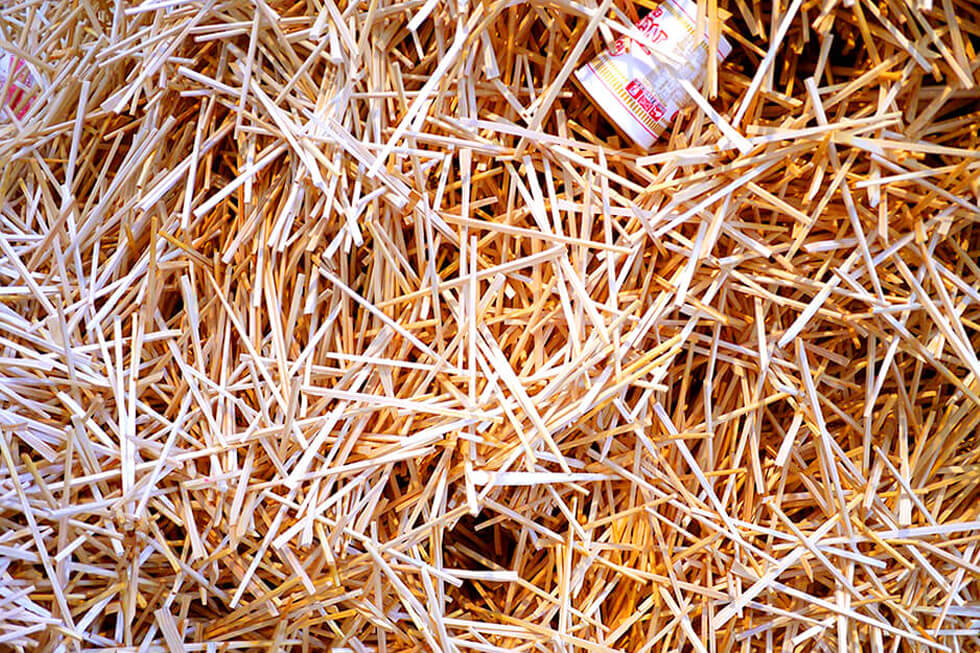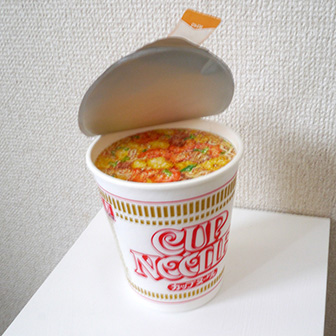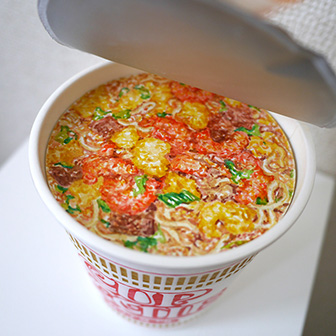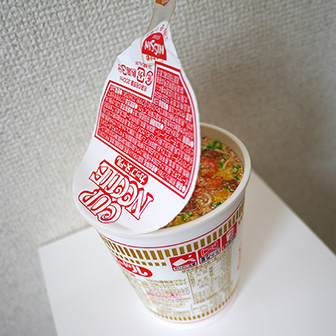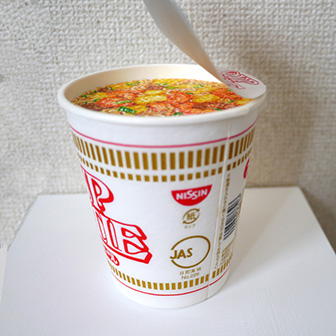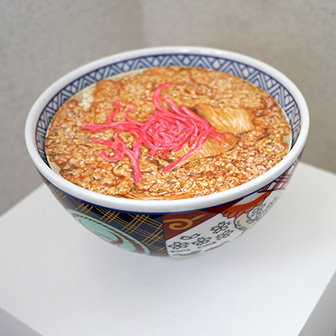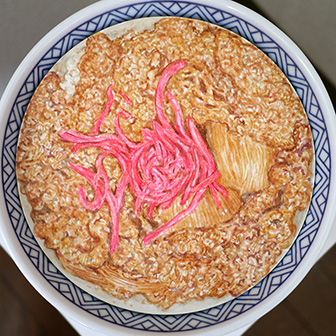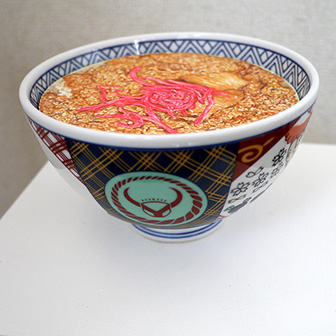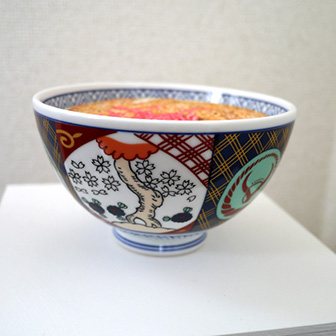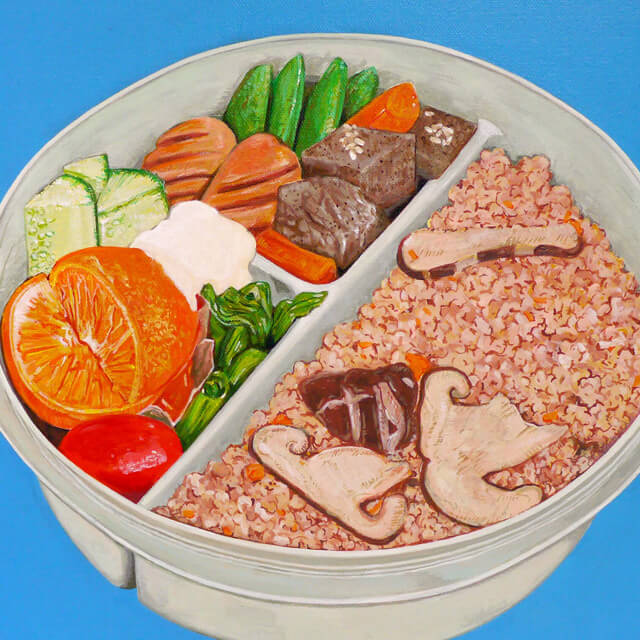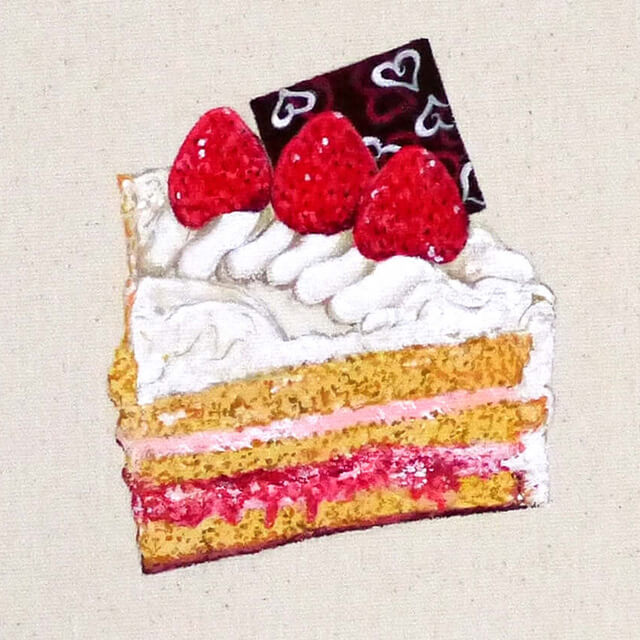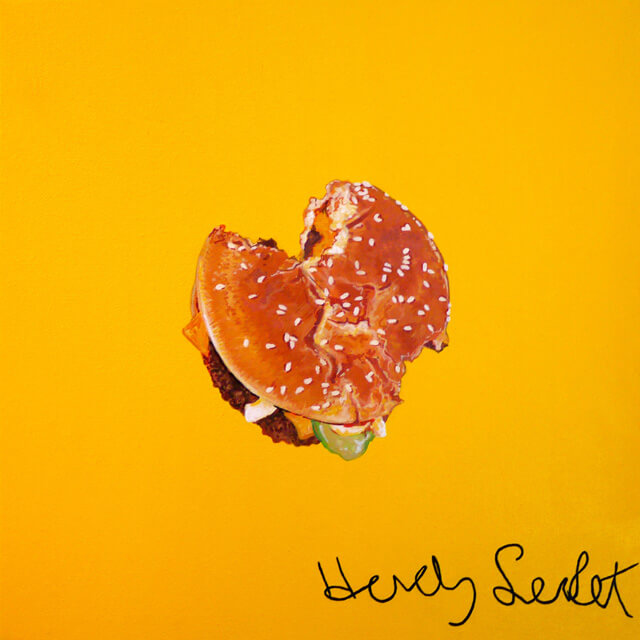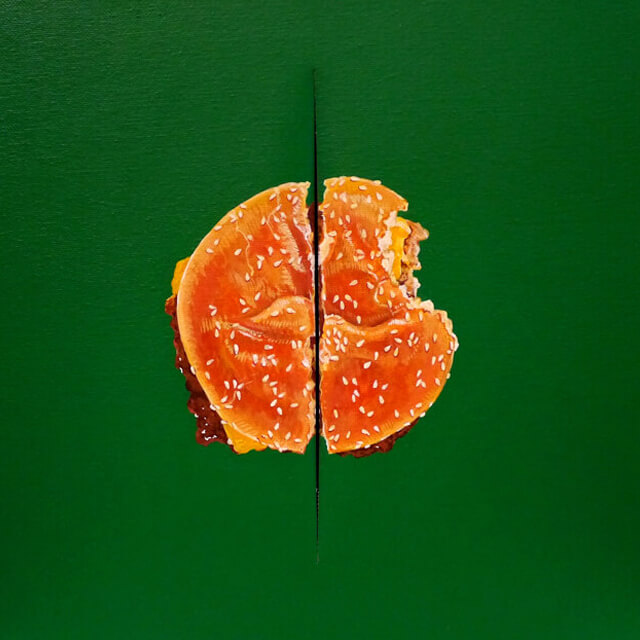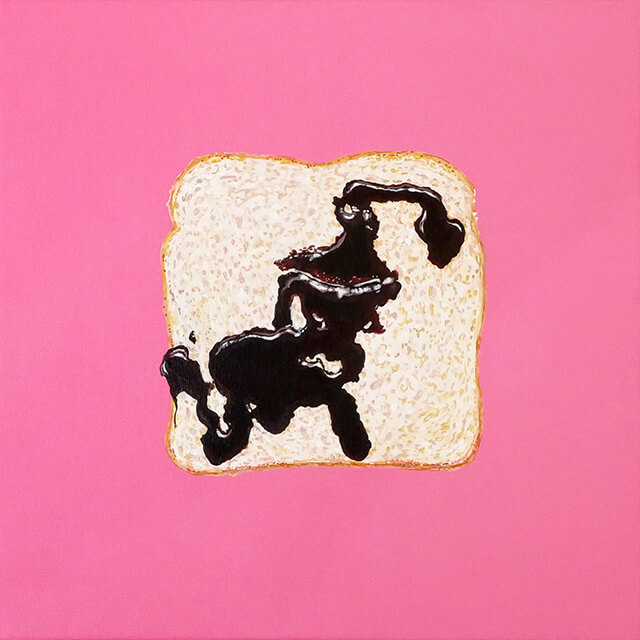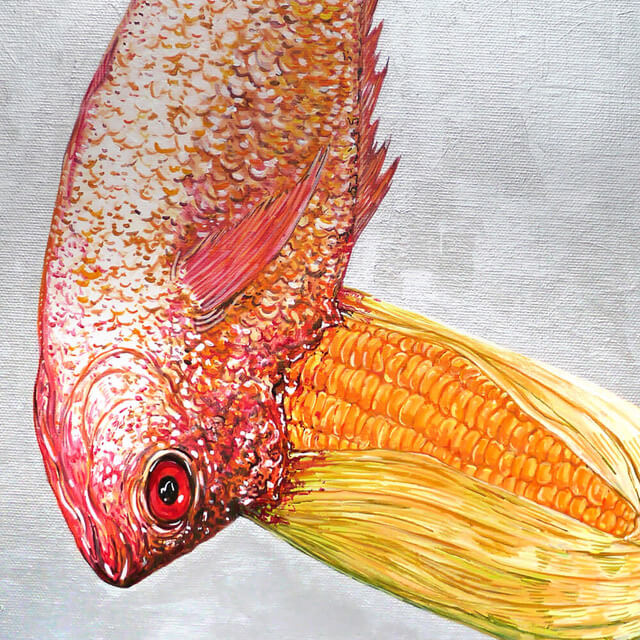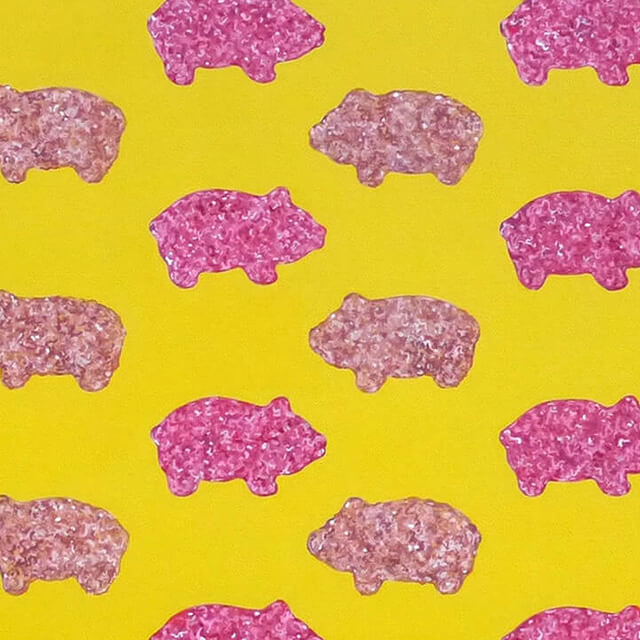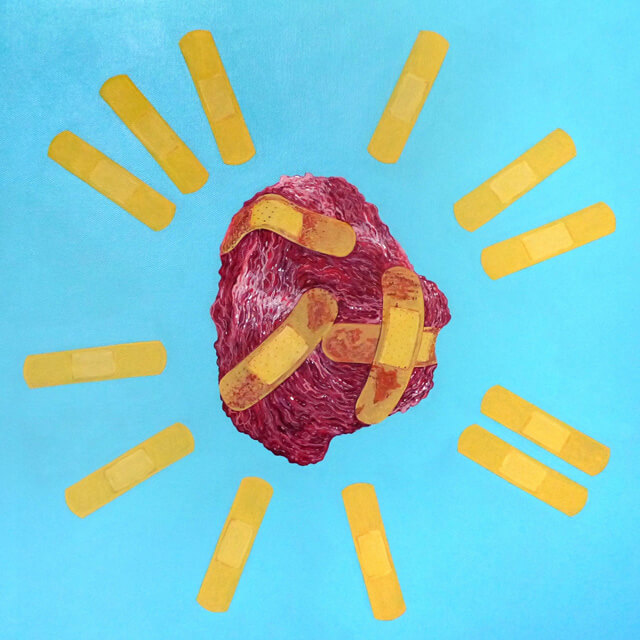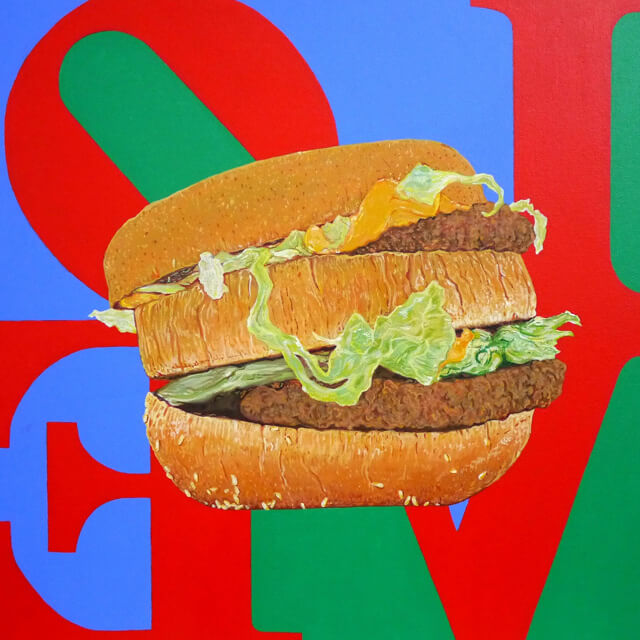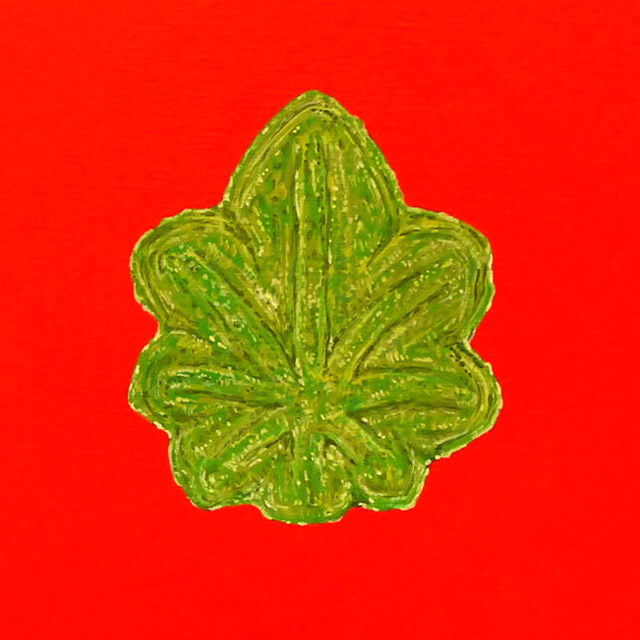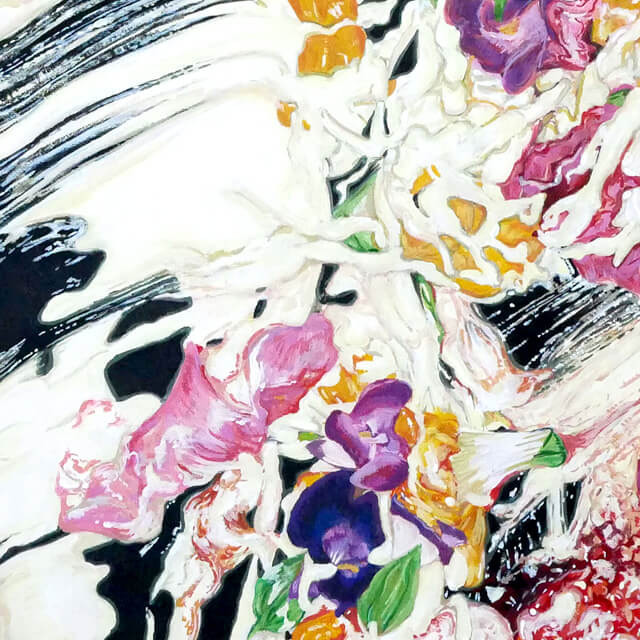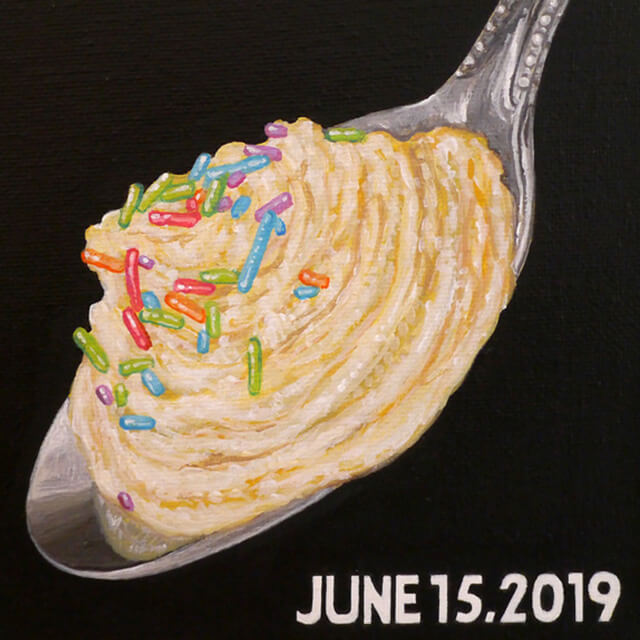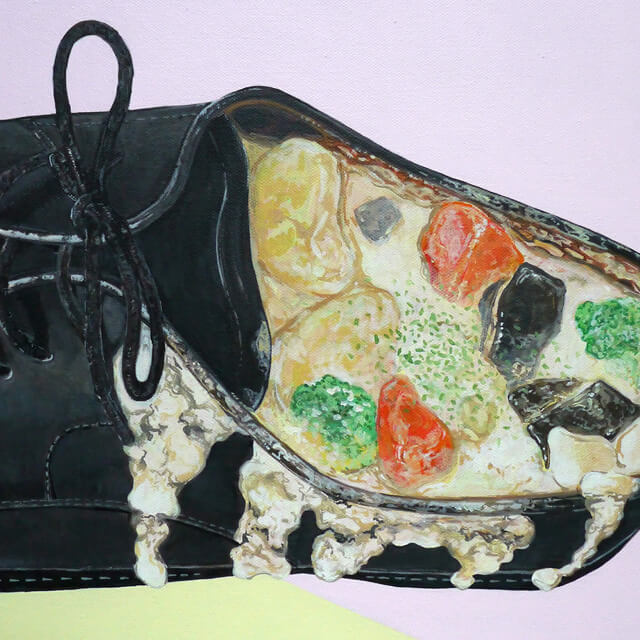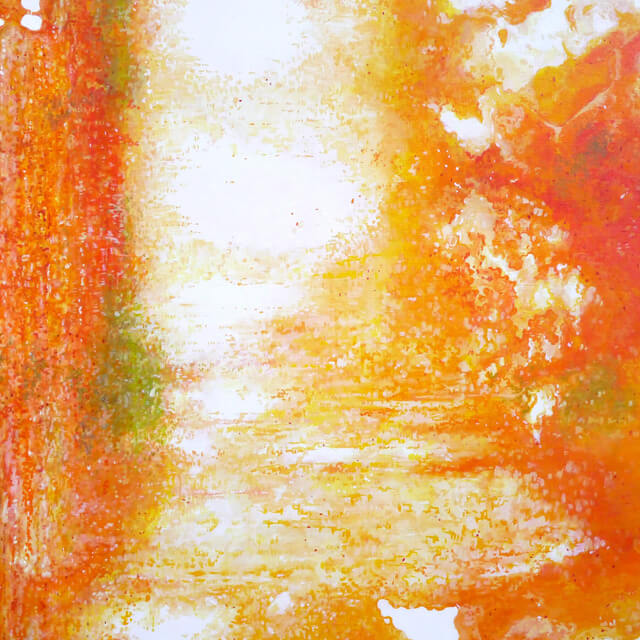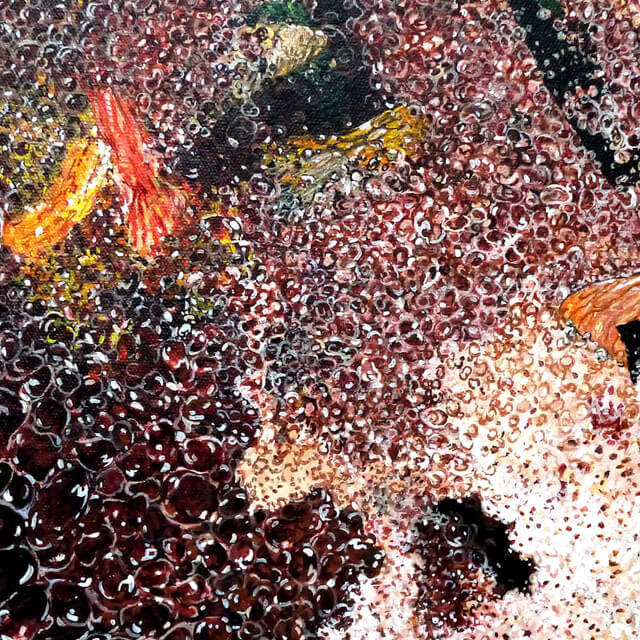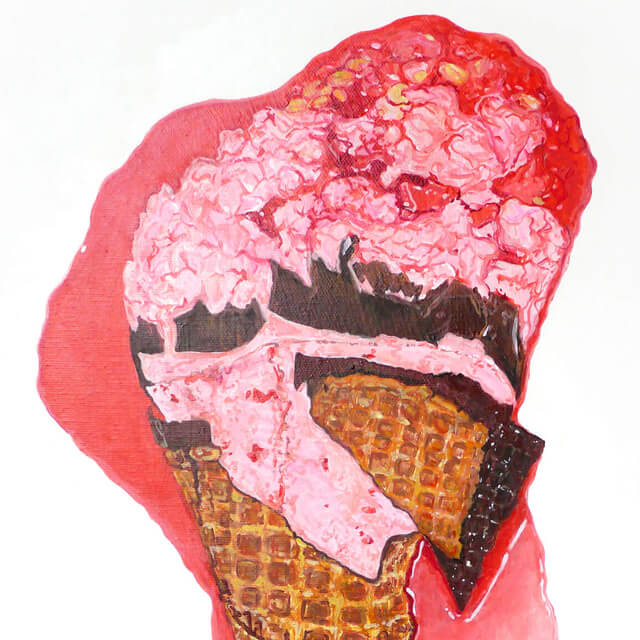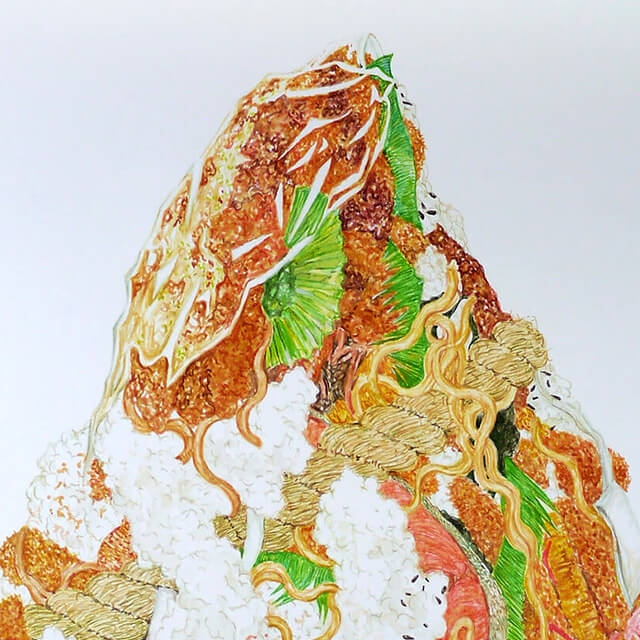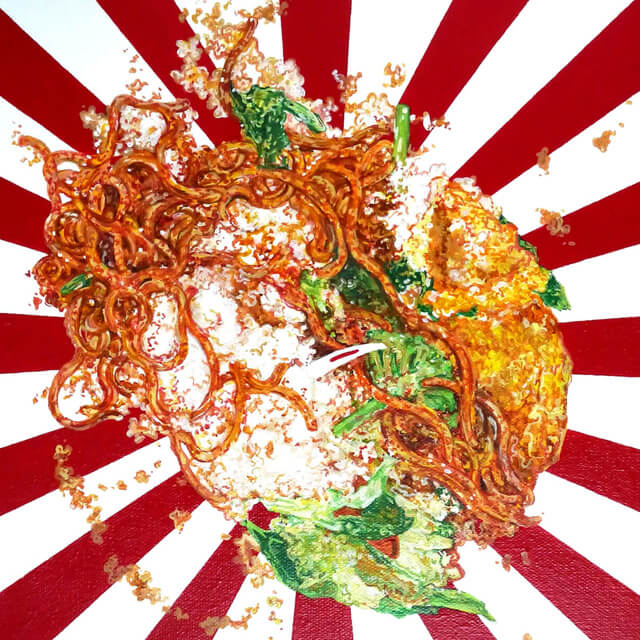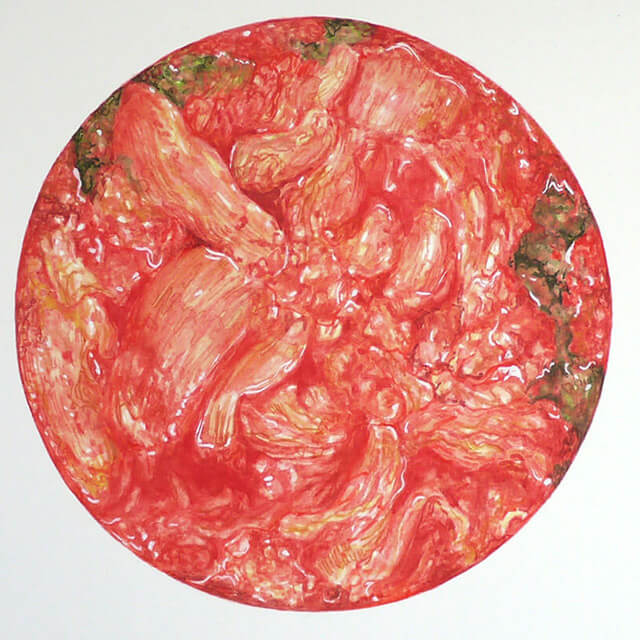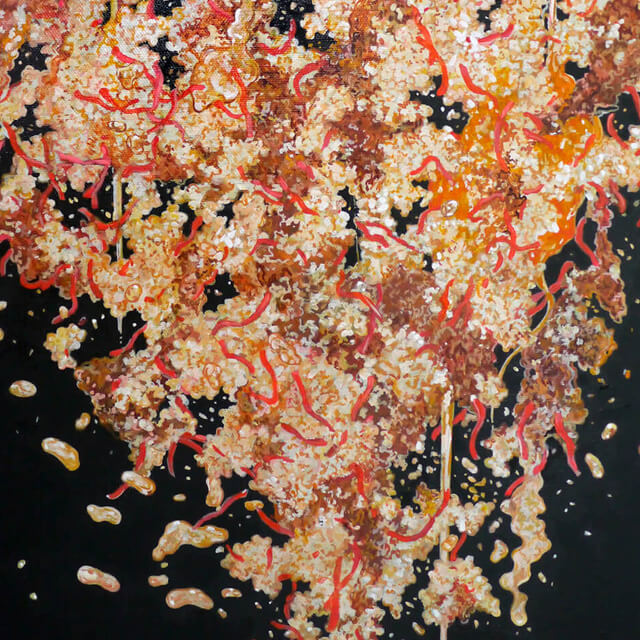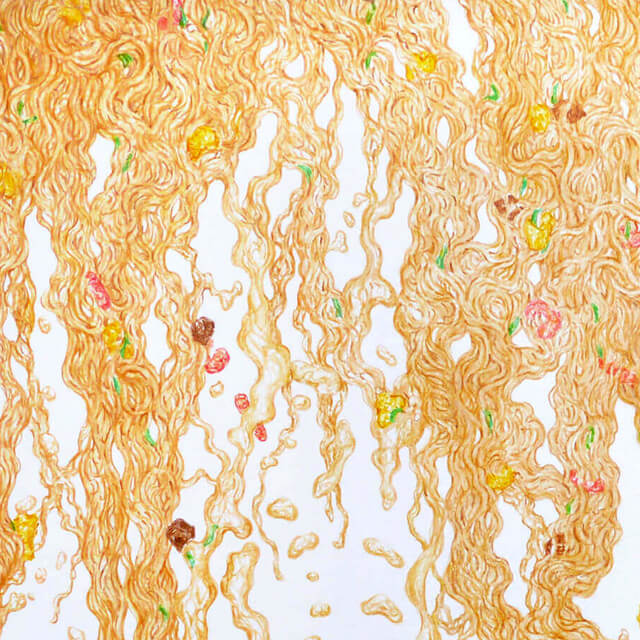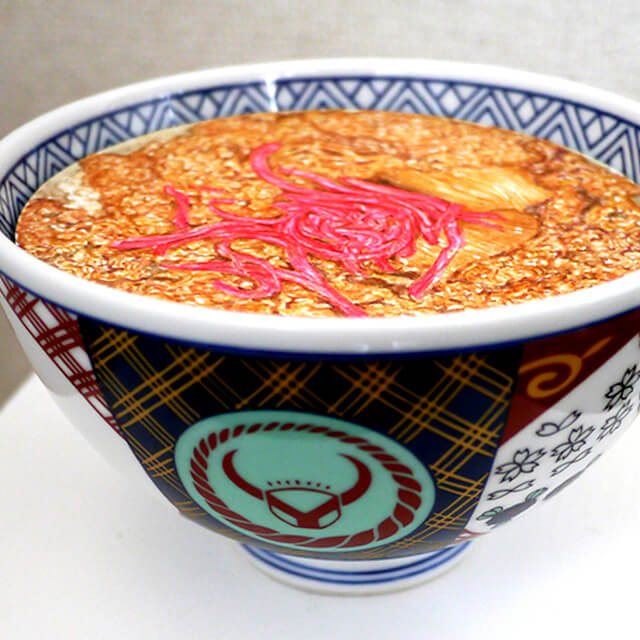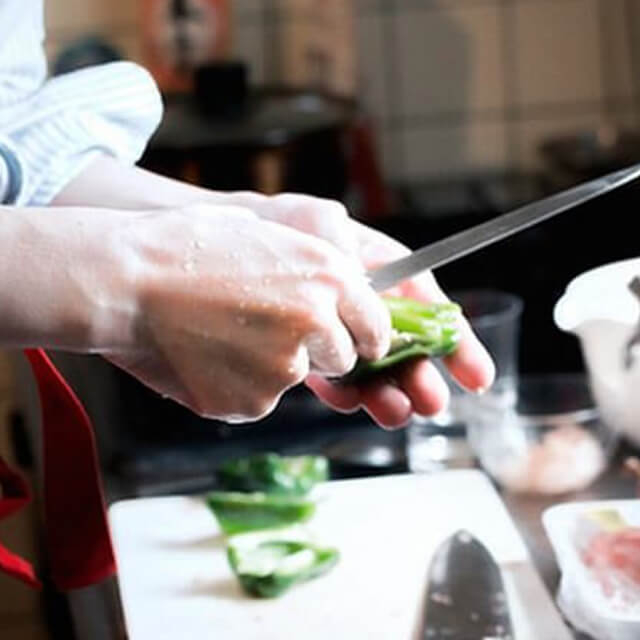REVIEW: "Mountains of Bento Meals from Convenience Stores-Time is money."
In a Japan where all things economy are given first priority, various negative things are going on in the shady parts of everyday life. One of them is the disposal of leftover food. Shintaku, whose education
includes next to studies at art university also training at a culinary school, chose this problem as a central theme for his creative work.
According to the artist’s calculation, the number of bento (lunch) boxes discarded by convenience stores of a certain chain across Japan every day after their sell-by date amounts to a total of about 510,000 sets(255 million yen). These are indeed startling numbers, and the first thing I want to express here is that I was honestly shocked to learn about this fact.
So how can this topic be addressed in the realm of art? Aiming at discarded “convenience store bento meals”, for this exhibition the artist combined a certain conceptual approach and its visual representation. The thoroughly careful way he determines the components of his works and related them to the main theme is probably something that lies in the artist’s nature. The motif of the clock suggests the expiry dates, with the sounds of cash registers’ barcode scanners working like time signals. The ridgeline of the mountain of disposed food hints at the changing GDP, while the colors at the panels’ sides represent the convenience store chain’s three symbol colors.
Excellent in terms of conceptual consistency, the work was full of expressions beyond logic, which can certainly be attributed to the painted images of discarded food. Rather than aesthetic requirements, the paintings are indeed based on the colors and shapes of various circulating foods and related products (such as fried food, spaghetti, or those little green plastic baran dividers in bento boxes). In other words, these are paintings that mark a clear departure from aesthetic artistic expression. Nonetheless, the images that these objective depictions of food project are so bizarre that they leave an impression that is absolutely beyond description, almost in a surrealist kind of way. Manifestations of Tomoni Shintaku’s own individual point of view, these works are completely
different from the cynical depictions of food in the consumer society that Andy Warhol made by painting cans of Campbell’s soup.
Itaru HIRANO (Chief Curator, Museum of Modern art, Saitama)
By TWS-Emerging 2016 Program








